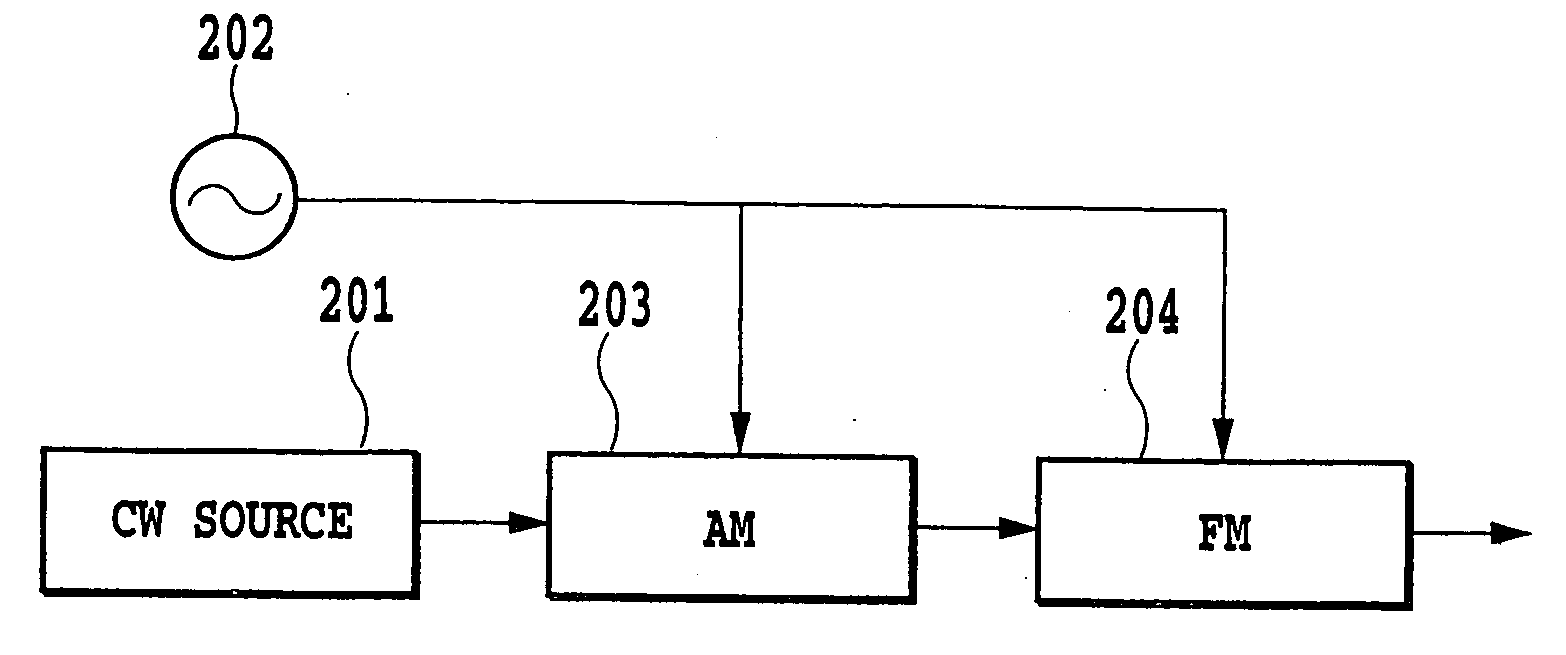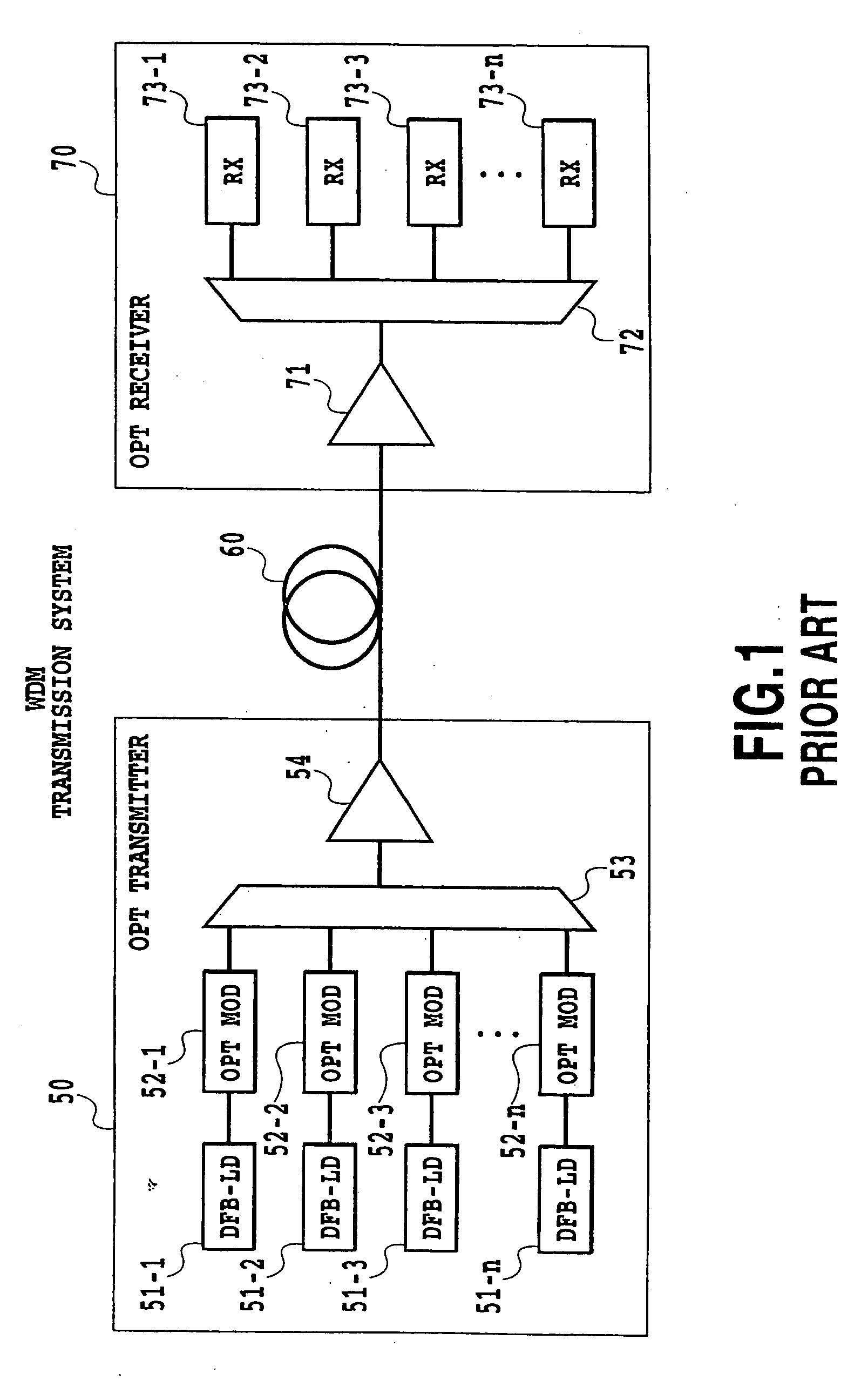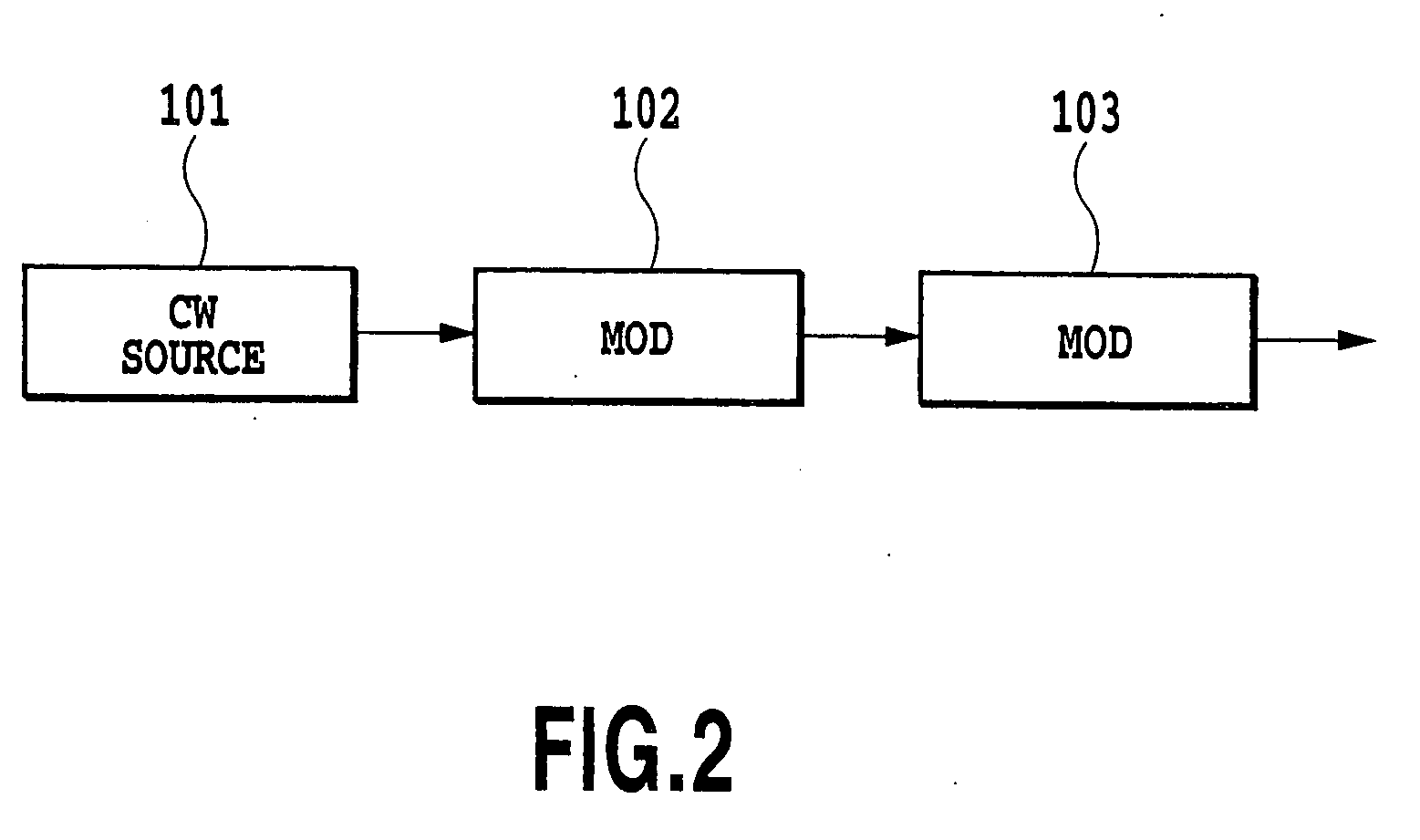Multi-wavelength generating method and apparatus based on flattening of optical spectrum
a multi-wavelength and optical spectrum technology, applied in the field of optical communication technologies, can solve the problems of inability to dynamically control the deviation of power level among longitudinal modes, incoherent and thus unsuitable for dense wdm transmissions involving a large number of wavelengths, and inability to coherently and thus unsuitable for dense wdm transmissions
- Summary
- Abstract
- Description
- Claims
- Application Information
AI Technical Summary
Benefits of technology
Problems solved by technology
Method used
Image
Examples
third embodiment
[Third Embodiment of the Multi-wavelength Generating Apparatus]
FIG. 34 shows the configuration of the third embodiment of the multi-wavelength generating apparatus according to the present invention.
As shown in FIG. 34, the multi-wavelength generating apparatus of this embodiment is composed of the light source 1 generating a light having a single central wavelength, a bipolar Mach-Zehnder intensity modulator 20, a oscillator 3 for generating a signal voltage repeated with a predetermined period, the power regulator 4, the power-varying DC power supply 5, and a phase adjuster 6. The power regulator 4 and the phase regulator 6 are coupled together in series.
The bipolar Mach-Zehnder intensity modulator 20 has such a well-known configuration that an incident light is branched into two optical paths so that output lights from the optical modulators arranged in the corresponding optical paths are multiplexed and converged for emission. Each of the branched paths has optical modulatin...
fourth embodiment
[Fourth Embodiment of the Multi-wavelength Generating Apparatus]
FIG. 35 shows the configuration of the fourth embodiment of the multi-wavelength generating apparatus according to the present invention.
The multi-wavelength generating apparatus of this embodiment shown in FIG. 35 comprises, instead of the oscillator 3 of the third embodiment, an oscillator 3a for generating a sinusoidal signal voltage as one for generating a signal voltage repeated with a predetermined period. It further comprises a multiplier 7 coupled to the power regulator 4 in series.
This configuration varies the frequency of the signal voltage applied to the opposite electrodes of the Mach-Zehnder intensity modulator 20. That is, an output signal voltage from the oscillator 3a is applied to one of the electrodes after having its frequency multiplied by the multiplier 7, while the output frequency from the oscillator 3a is applied to the other electrode as it is.
In this embodiment, the signal voltage repeate...
fifth embodiment
[Fifth Embodiment of the Multi-wavelength Generating Apparatus]
FIG. 36 shows the configuration of the fifth embodiment of the multi-wavelength generating apparatus according to the present invention.
The multi-wavelength generating apparatus of this embodiment shown in FIG. 36 is composed of the light source 1 generating a light having a single central wavelength, a group of optical modulators 2c consisting of the bipolar Mach-Zehnder intensity modulator 20 and a phase adjuster 28 coupled together in series, the oscillator 3 for generating a signal voltage repeated with a predetermined period, the power regulator 4, the power-varying DC power supply 5, and the phase regulator 6.
A signal voltage from the oscillator 3 has its power regulated properly by the power regulator 4 and is then applied to the Mach-Zehnder intensity modulator 20. This signal voltage further has its temporal position regulated by the phase regulator 6, has its power regulated properly by the power regulator ...
PUM
| Property | Measurement | Unit |
|---|---|---|
| optical- | aaaaa | aaaaa |
| phase | aaaaa | aaaaa |
| repetition frequency | aaaaa | aaaaa |
Abstract
Description
Claims
Application Information
 Login to View More
Login to View More - R&D
- Intellectual Property
- Life Sciences
- Materials
- Tech Scout
- Unparalleled Data Quality
- Higher Quality Content
- 60% Fewer Hallucinations
Browse by: Latest US Patents, China's latest patents, Technical Efficacy Thesaurus, Application Domain, Technology Topic, Popular Technical Reports.
© 2025 PatSnap. All rights reserved.Legal|Privacy policy|Modern Slavery Act Transparency Statement|Sitemap|About US| Contact US: help@patsnap.com



